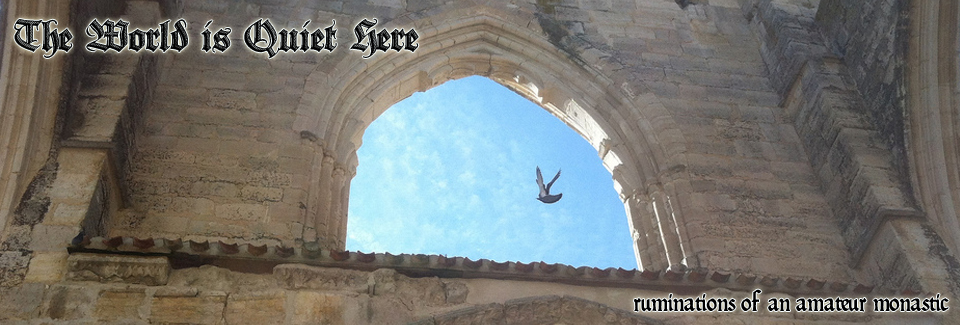Some Thoughts on the Divine Office

Over the years, some people have asked me why I prefer the (ancient) monastic Divine Office to the modern Liturgy of the Hours.

Let me hasten to assure you that both are equally valid. Both are the prayer of the Church, for the Church.
Indeed, to these we could add the Extraordinary Form’s Divinum Officium, the various Eastern rites, as well as uses from another half-dozen religious Orders.
They are all perfectly valid and licit. None of them are bad. I myself pray the modern Liturgy of the Hours in community every Wednesday with our RCIA class and on Sundays of Advent and Lent in our parish. No worries.
So why do I prefer the monastic Divine Office?
Several reasons present themselves. As a Benedictine Oblate, I’m obligated to pray some form of the Divine Office, and it just makes sense to me to use the form closest to the one that Saint Benedict proposes in his Holy Rule.
Beyond this, there’s a certain poetry to the monastic form that is not evident in the modern form – a poetry that sings to me in the quiet places of my heart and whispers of the great majesty and interconnectedness of God’s vast plan.
I was reminded of this during this morning’s Lauds for Saint Agnes.
The antiphons tell a little story of Agnes’ martyrdom, and they do so in words that would not be out of place in any great and terrible mythopoeic tale. They even manage to connect with their appointed psalms and canticles, sometimes in a clever way.
Antiphon 1
Agnes having entered the place of infamy, found an Angel of the Lord ready.
(For Psalm 92, “The Lord hath reigned…”)Antiphon 2
For I have with me an Angel of the Lord as a guardian of my body.
(For Psalm 99, “Sing joyfully to God, all the earth…”)Antiphon 3
My Lord Jesus Christ has espoused me with a ring, and as a bride He has adorned me with a crown.
(For Psalm 62, “O God, my God, to thee do I watch at break of day…”, recalling the Parable of the Ten Virgins in Matthew 25)Antiphon 4
I bless Thee, O Father of my Lord Jesus Christ, because of Thy Son the fire that surrounded me is quenched.
(Quite apropos for the Canticle of the Three Young Men, Daniel 3:57-88,56)Antiphon 5
Rejoice with me and be glad, because with all these I have received a throne of glory.
(For the Laudate Psalms, 148, 149, 150)Benedictus Antiphon
Behold, that which I have desired I already see; that for which I hoped I already possess; I am united with Him in heaven Whom I loved with all devotion on earth.
Let us compare these to the antiphons for this morning’s Lauds for Saint Agnes in the modern Liturgy of the Hours:
Antiphon 1
My Lord Jesus Christ has espoused me with his ring; he has crowned me like a bride.Antiphon 2
I am espoused to him whom the angels serve; sun and moon stand in wonder at his beauty.Antiphon 3
Rejoice with me, and be glad, for I have taken my place with all the saints in the kingdom of light.Benedictus Antiphon
What I longed for, I now see; what I hoped for, I now possess; in heaven I am espoused to him whom on earth I loved with all my heart.
In comparison, they largely fall flat. Part of this is no doubt the insipid translation of the Liturgy of the Hours under which we currently labour. But they fairly well all harp on the same theme with little variation, and there’s almost no thematic connection with the corresponding Psalms.
Even Antiphon 1, a copy of Antiphon 3 of the older form, suffers in this translation. It’s just kind of limp. Hopefully this will be corrected when the new translation is complete, reportedly in 2020 or so.
I do like Antiphon 2, which is both quite lovely and also nicely connects with the associated Canticle of the Three Young Men.
Antiphon 3 is most likely a badly translated version of Antiphon 5 from the older form. Here’s my question: which is more evocative, “taken my place” or “received a throne of glory”?
When I prayed the Liturgy of the Hours – for years – I was constantly being thrown out of prayer by my editorial brain finding fault with the language and the rhythm. Maybe it’s the translation that gives me a hard time, rather than the texts themselves.
I reckon we’ll find out in 2020. Or so.

Have you tried the Office in Latin? no problems with translation here except for your own 🙂
http://divinumofficium.com/
My copy of the Monastic Diurnal has both English and Latin. I confess that I mostly stick to the English, but over the past year I’ve been including more and more Latin as I go, particularly on Sundays and for feasts.
http://www.thomryng.com/amateurmonk/review-monastic-diurnal-at-one-year/
Pingback: Agnes, in Agony – The World is Quiet Here